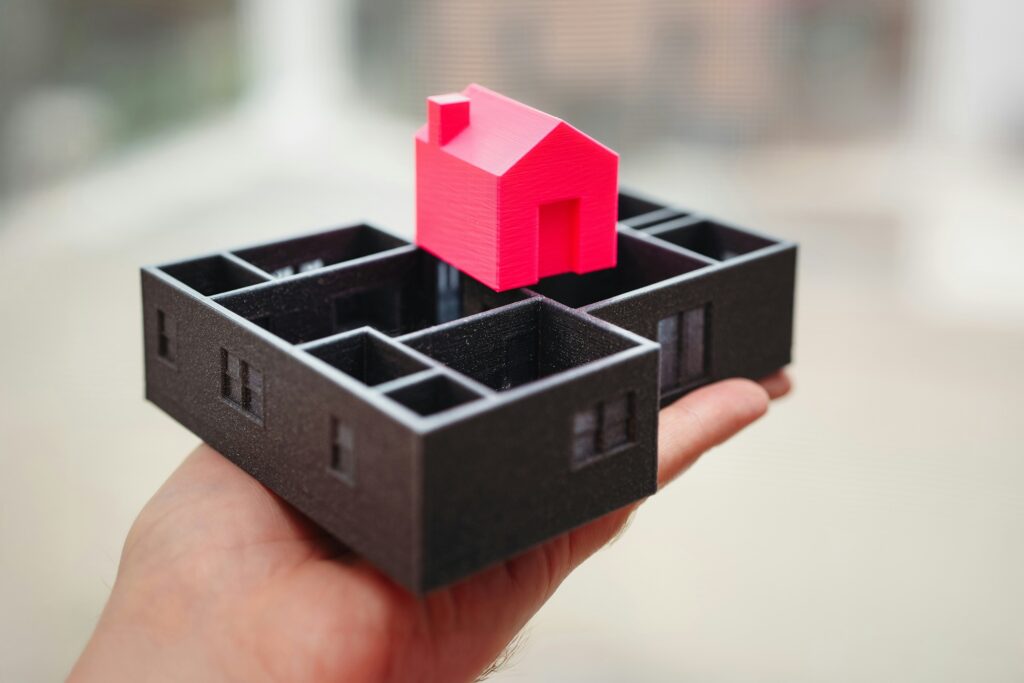Introduction: What’s Driving the Surge in Smart Homes?
Smart home tech is no longer a futuristic bonus—it’s become part of the baseline. From voice-controlled lights to app-based security systems, what used to feel like luxury now feels like standard equipment. House hunters aren’t just looking at square footage or countertop materials anymore; they’re asking if the thermostat responds to voice commands and if the cameras sync to their phones.
That shift is showing up in the numbers. A recent survey by Coldwell Banker found that over 70% of buyers consider smart features a must-have, especially in mid-to-high-end properties. Listings that highlight integrated tech—whether it’s climate control or integrated security—are grabbing more attention and selling faster.
The bottom line: convenience, efficiency, and connectivity are driving demand. Buyers want homes that do more than shelter—they want homes that think, adapt, and simplify daily life. For sellers and agents, leaning into smart upgrades isn’t a nice-to-have anymore—it’s how you stay in the game.
Core Features Buyers Are Looking For
Smart homes aren’t just futuristic anymore—they’re functional. Buyers in today’s market are zoning in on four key features that deliver comfort, control, and peace of mind.
Security remains top of the list. People want to see and know what’s happening around their homes, whether they’re inside or halfway across the country. That means surveillance cameras with remote access, smart locks that log activity, and real-time alerts pushed directly to smartphones. It’s more than a deterrent—it’s a system that fits into modern living.
Next up: climate control. Smart thermostats like Nest and Ecobee don’t just learn your schedule—they actively help cut down on energy bills. Connected to phone apps and voice assistants, these systems adjust in real-time and promote sustainable choices. Green upgrades such as zoning and smart vents are also becoming standard in eco-conscious builds.
Lighting and automation go hand in hand. Gone are the days of flipping switches in every room. With automated routines and app-based controls, homeowners can set moods with a single tap or sync lighting patterns based on the time of day. It’s all about convenience—and saving power where you can.
Finally, voice integration has moved from novelty to necessity. Whether it’s Alexa turning down the lights or Google Assistant locking the door, ecosystems that let you manage your home hands-free are in high demand. The easier it is to control your space, the more attractive it is to buyers.
These aren’t just features—they’re expectations. In the 2024 real estate market, smart living isn’t a luxury. It’s the new baseline.
Impact on Property Value
Smart home upgrades aren’t just cool add-ons anymore—they’re raising property values in measurable ways. Sellers who invest in the right tech are finding it easier to justify a higher asking price, and buyers are proving willing to pay for convenience, efficiency, and peace of mind. Installing smart thermostats, voice-activated lights, or security systems can bump a home’s perceived value by thousands—without changing a single square foot.
The numbers back it up. According to a 2023 Redfin report, homes marketed as “smart-enabled” sold on average 7 days faster and for up to 5% more than comparable non-smart listings in major metro areas. In a competitive market, any edge counts. Smart features often tip the scales in bidding wars, especially with younger buyers who expect tech capabilities baked in.
Appraisers are catching up, too. While traditional appraisal models have lagged behind tech trends, more professionals are now factoring in smart systems in their valuation process—especially when the upgrades are permanent and part of the home’s infrastructure. Features like energy-efficiency ratings, integrated systems, or whole-home automation setups are starting to carry real weight.
Bottom line: these aren’t just upgrades—they’re assets. And in today’s market, they translate directly into selling power.
Benefits for Buyers and Homeowners
Smart homes aren’t just about cool gadgets—they’re about smarter living. Starting with cost savings, energy-efficient systems like smart thermostats and lighting can noticeably cut down monthly bills. Devices learn your habits and adjust automatically, so your home only uses what it needs—no wasted heat, no lights left on in empty rooms. Over time, those savings stack up.
Then there’s peace of mind. Smart security systems offer real-time alerts, remote monitoring, and integration with emergency services. Whether you’re in bed or abroad, you can check who’s at the door or make sure everything’s locked up tight, all from your phone.
Lastly, future-proofing matters. A home that adapts to new tech trends doesn’t just stay relevant—it stays valuable. Buyers are starting to expect smart integrations. Making the investment now means your property won’t feel outdated five years down the line. It’s a long play that pays off when it’s time to sell—or simply live a bit easier.
The Builder & Agent Perspective
Smart homes aren’t just upgrading how we live—they’re giving agents and builders sharp new angles to work with. Real estate professionals are now dialing into tech features as lead tools. Instead of just listing square footage and granite countertops, they’re leading with smart locks, integrated sensors, and app-controlled everything. For buyers, that means homes marketed with terms like “voice-ready” or “security-optimized” catch the eye quicker.
On the builder side, tech is often baked in from the blueprint. Wi-Fi mesh networks, EV-charger-ready garages, and smart HVACs are going into new homes as default, not upgrades. Developers want the homes to sell themselves, and these features signal modern living without extra effort.
Still, there’s a line between offering choice and overloading with options. Some buyers prefer blank canvases—homes wired for tech but not loaded with hardware. Others want turnkey automation right out of the box. The sweet spot for many builders is flexible infrastructure: install the essentials, allow for add-ons, and make integration smooth.
Smart tech isn’t just icing. It’s a practical selling tool—and the agents and builders who know how to talk about it are staying ahead.
Challenges and Considerations
Smart homes bring convenience, but they also come with trade-offs worth thinking through.
First, privacy isn’t just a buzzword—it’s your front line. Smart devices collect data constantly. That means everything from your thermostat habits to your security camera footage is stored somewhere, often in the cloud. If that data isn’t secured properly, it’s open season for hackers. Home networks need strong passwords, regular updates, and sometimes, a professional security audit to lock it all down. It’s not just about protecting your devices—it’s about protecting your life.
Then there’s the headache of compatibility. Throw in a smart fridge from one brand, a thermostat from another, and lighting on its own system, and suddenly you’re managing tech like a part-time IT specialist. Not all devices talk to each other, and bouncing between apps or hubs can kill the vibe of a seamlessly connected space. Sticking to one ecosystem, or choosing products built on open protocols, can save future pain.
Finally, the money side: smart upgrades aren’t free. Entry-level setups may cost a few hundred, but a full package—cameras, lights, locks, automation? Easily thousands. Yes, there’s long-term value: lower power bills, added resale appeal, modern living. But it takes upfront investment. For some, it’s worth it day one. For others, it’s a slow build.
In short, the tech is impressive, but it’s not plug-and-play bliss. Smart means making smart choices, too.
Looking Ahead: Tech That’s Reshaping the Market
As smart home adoption continues to grow, the next wave of innovation is already shaping what future living will look like. It’s not just about individual devices anymore—smart technology is expanding to rethink how entire homes, and even neighborhoods, operate.
Emerging Innovations in Smart Real Estate
The real estate market is seeing new tech trends that go beyond convenience and lean into automation, data insights, and ecosystem design.
- Smarter Infrastructure: Built-in wiring for high-speed connectivity, integrated charging stations for electric vehicles, and centralized control panels.
- Enhanced Energy Systems: Smart solar panels, battery storage, and intelligent water management that adjusts usage based on environmental data.
- Green Certifications: Homes built with smart energy systems are increasingly earning sustainability credentials that boost market appeal.
AI-Powered Living: Assistants & Maintenance
Artificial intelligence is shifting from novelty to necessity in the smart home space. Buyers now expect systems that not only respond but predict their needs.
- AI Home Assistants: Tools like Alexa and Google Assistant are evolving to manage routines, control lighting, and even suggest energy-saving habits based on past usage.
- Predictive Maintenance: Smart detectors and sensors monitor everything from HVAC systems to plumbing—alerting homeowners before problems become costly repairs.
- Learning Systems: These tools adapt over time, customizing comfort and control to fit each household’s schedule and preferences.
From Smart Homes to Smart Neighborhoods
Connected technology is scaling beyond individual properties, fostering entire communities where integration offers collective benefits.
- Centralized Management: Gated communities are implementing shared smart infrastructure—controlled-entry systems, remote gate access, and neighborhood-wide surveillance.
- Community Energy Grids: Solar-powered homes can participate in microgrids, sharing electricity with neighbors and reducing dependency on the main grid.
- Shared Resources: Smart lockers, automated mail deliveries, and communal workspaces improve convenience and efficiency on a neighborhood level.
The next chapter of smart living is about systems working in harmony—not just within a household, but across community lines. These developments are redefining what it means to buy, sell, and live in a truly modern home.
Final Word: Smart Is Now the Standard
Smart Homes Are No Longer Optional
In today’s fast-moving real estate landscape, smart home features have moved from optional upgrades to baseline expectations—especially in mid-to-high price brackets. Buyers are not only comparing square footage and finishes, but also asking:
- Does the home have smart security or energy-saving systems?
- How easy is it to manage the property remotely?
- Is the home compatible with popular voice assistants?
The result? Homes lacking smart features are increasingly at a disadvantage.
Sellers: Easy Tech Upgrades That Add Value
You don’t need a full tech overhaul to stay competitive. Sellers can invest in selective improvements that make a real impact:
- Smart thermostats: affordable, energy-efficient, and appealing to eco-conscious buyers
- Smart locks and doorbell cameras: offer convenience and added security
- Voice assistant integration: connect lighting or music to popular systems like Alexa or Google Home
These upgrades are relatively low-cost but add perceived value and can differentiate your listing in a crowded market.
Buyers: What to Look For in a Connected Home
Buyers entering the market for a smart home should think beyond just gadgets. Look for homes that offer:
- Integrated systems: seamless control of climate, lighting, and security from one app or platform
- Energy efficiency: smart meters, efficient appliances, and programmable controls that lower bills
- Future readiness: homes with upgradable infrastructure can adapt as new technology emerges
As smart tech becomes more embedded into everyday living, buyers and sellers alike should treat it as a strategic asset—not just a luxury.
For more insights on real estate and smart living, visit House Zone Spot.


 Billake Bartow is a passionate tech writer at HouseZoneSpot, known for his deep understanding of smart home innovations and digital living. His articles focus on practical technology that enhances everyday comfort, convenience, and energy efficiency in modern homes.
Billake Bartow is a passionate tech writer at HouseZoneSpot, known for his deep understanding of smart home innovations and digital living. His articles focus on practical technology that enhances everyday comfort, convenience, and energy efficiency in modern homes.

